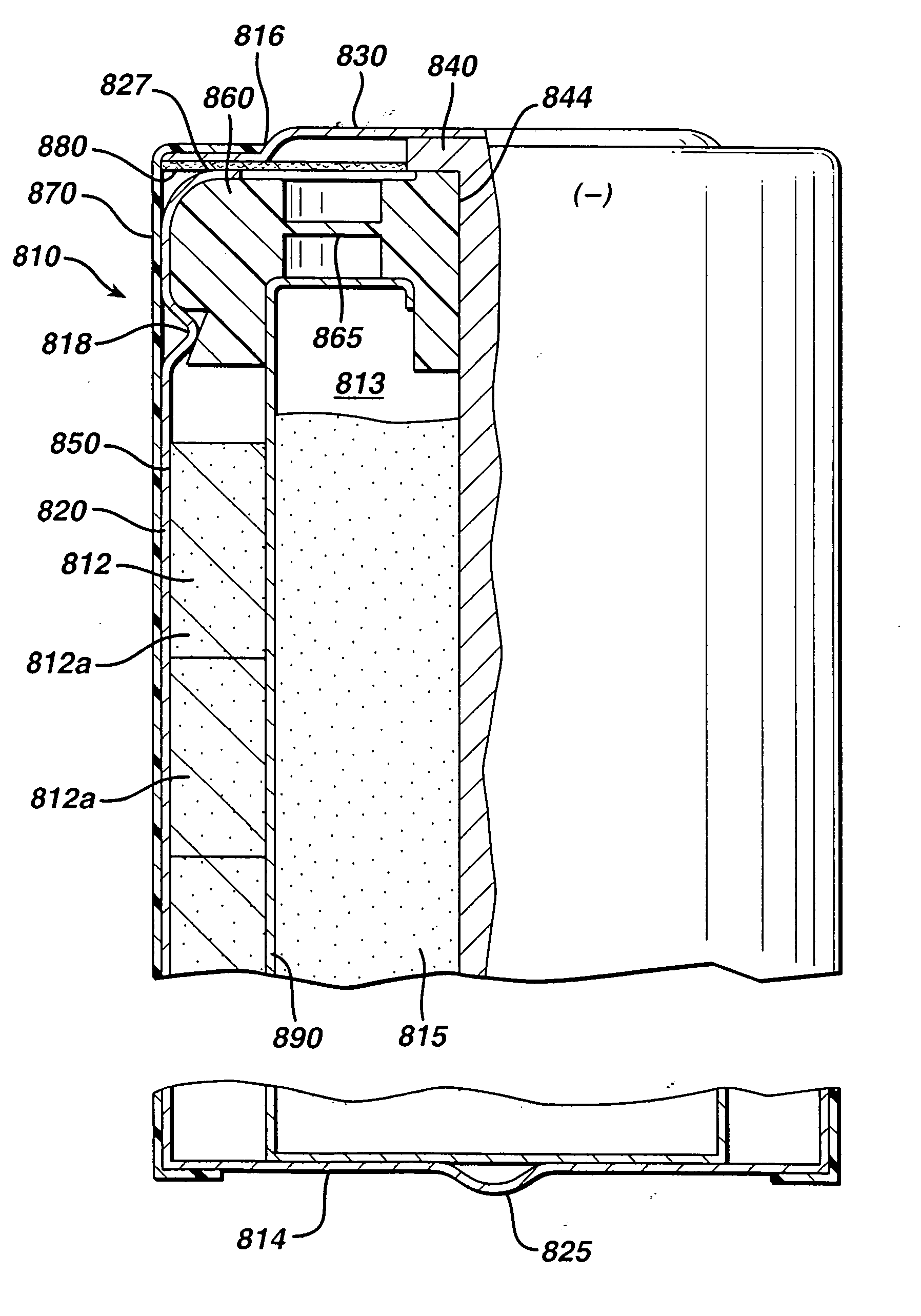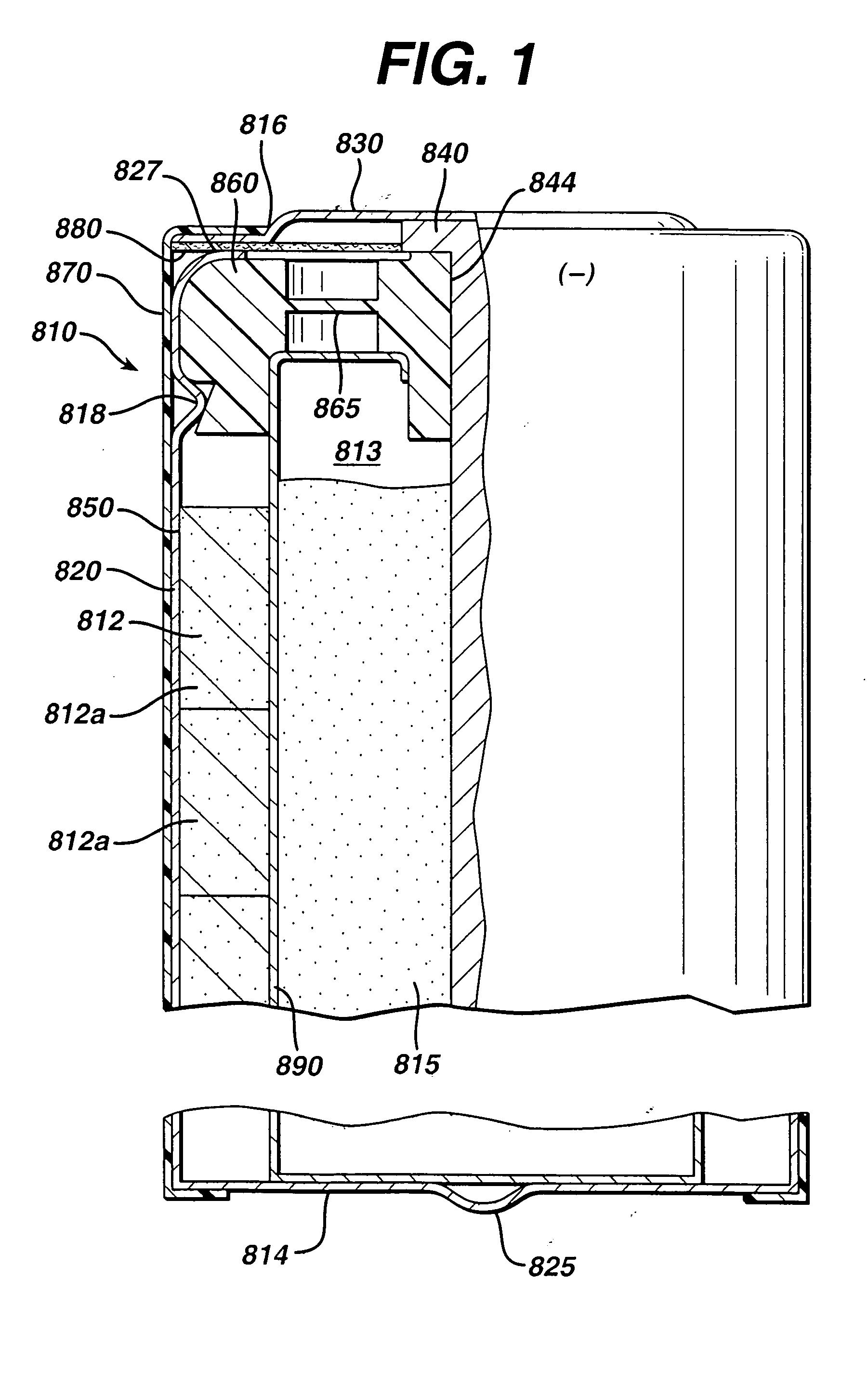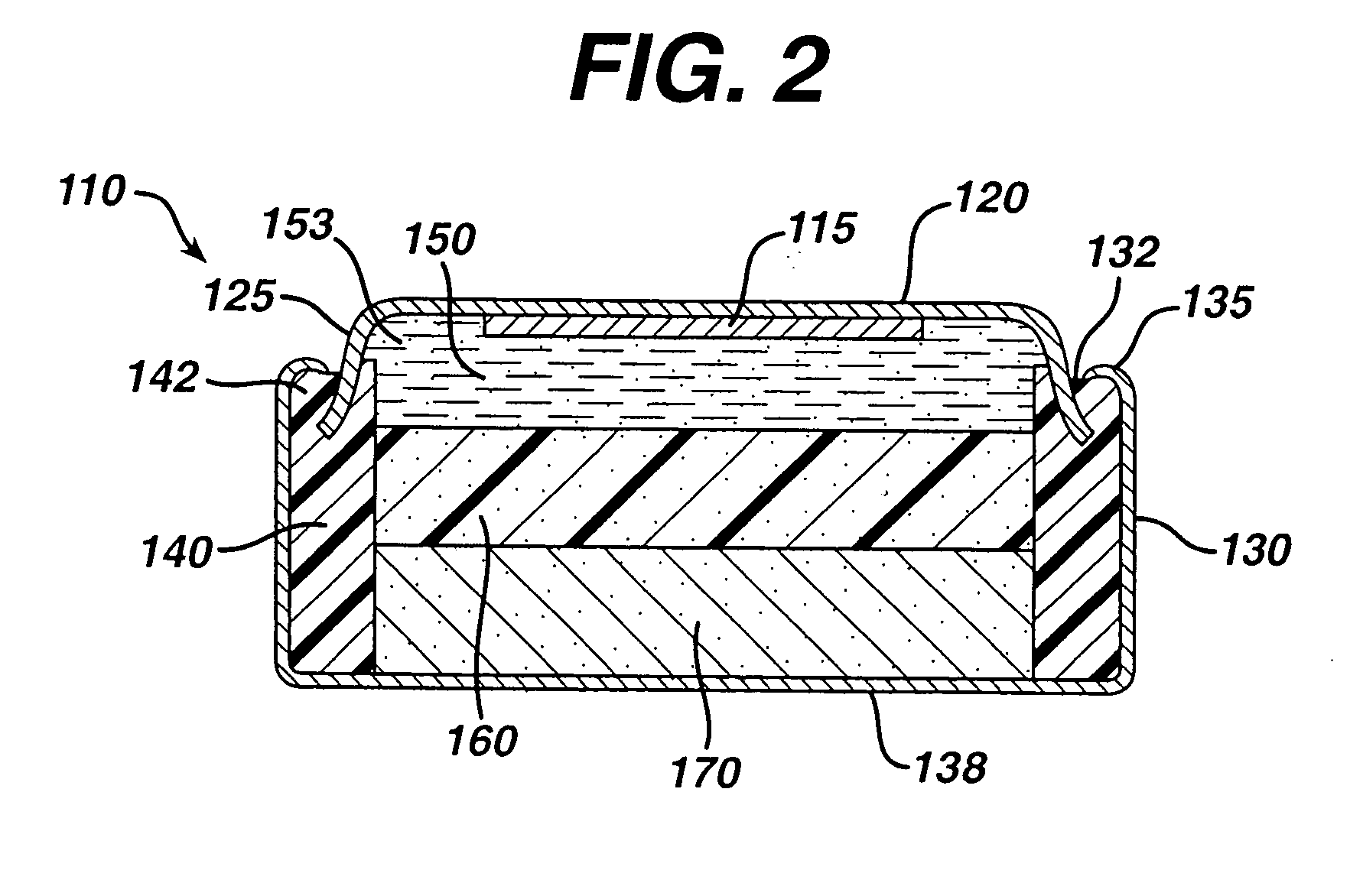Alkaline cell with improved anode
- Summary
- Abstract
- Description
- Claims
- Application Information
AI Technical Summary
Benefits of technology
Problems solved by technology
Method used
Image
Examples
example 1
Comparative Test—Conventional Anode Slurry / Conventional MnO2 Cathode
[0050] Test cylindrical AA cells of the general configuration shown in 810 (FIG. 1) were prepared. The cathode 812 in the comparative AA cell and test AA cells, for example, may have the following representative compositions: 80-90 wt % of electrolytic manganese dioxide (e.g., Trona D from Kerr-McGee), 4-10 wt % of expanded graphite (Timcal E-BNB90, BET surface of 24.3 m2 / g ), 5-10 wt % of an aqueous KOH solution having a KOH concentration of about 35-40 wt. %. A specific cathode composition for the comparative AA cell and test AA cells used for the performances tests reported in the Tables was as follows:
Cathode Composition1Wt. %MnO2 (EMD)87Expanded graphite8(Timcal E-BNB90)KOH aqueous5Solution (36 wt %KOH and 2 wt % ZnO)100
Notes:
1Conversion to volume percent can be made using the following real densities: MnO2 (EMD), 4.48 g / cc;
# expanded graphite (Timcal E-BNB90), 2.25 g / cc; and 36 wt % KOH aqueous solution, ...
example 2
Anode from Solid Porous Zinc Mass / Conventional MnO2 Cathode
[0056] Test AA size cells 810 were prepared as in Example 1 except that the anode 815 was formed from the wet zinc mass (wet preform) which was molded into the approximate shape of the anode cavity 813 and then dried to produce the solid porous zinc mass (solid preform) 815C of the invention. The solid preform was inserted into the anode cavity 813 and then aqueous potassium hydroxide electrolyte (concentration between about 35 and 40 wt. % KOH and 2 wt. % ZnO) was added. The solid porous zinc mass (solid preform) immediately absorbed the alkaline electrolyte and expanded to form the final fresh wet anode as described in the description hereinabove. The cathode composition comprising MnO2 was the same as used in Example 1. The cell had 4.6 grams of zinc as in Example 1 and was balanced so that the theoretical capacity of the zinc divided by the theoretical capacity of the MnO2 was about 1.
[0057] The wet zinc mass (wet pre...
example 3
Anode from Solid Porous Zinc Mass / Conventional MnO2 Cathode
[0064] Test AA size cells 810 were prepared as in Example 1 except that the anode 815 was formed from the wet zinc mass (wet preform) which was molded into the approximate shape of the anode cavity 813 and then dried to produce the solid porous zinc mass (solid preform) 815C of the invention. The solid preform was inserted into the anode cavity 813 and then aqueous potassium hydroxide electrolyte (concentration between about 35 and 40 wt. % KOH and 2 wt. % ZnO) was added. The solid porous zinc mass (solid preform) immediately absorbed the alkaline electrolyte and expanded to form the final wet anode as described in the description hereinabove. The cathode composition comprising MnO2 was the same as used in Example 1. The cell had 4.6 grams of zinc as in Example 1 and was balanced so that the theoretical capacity of the zinc divided by the theoretical capacity of the MnO2 was about 1.
[0065] The wet zinc mass (wet preform) h...
PUM
| Property | Measurement | Unit |
|---|---|---|
| Length | aaaaa | aaaaa |
| Length | aaaaa | aaaaa |
| Length | aaaaa | aaaaa |
Abstract
Description
Claims
Application Information
 Login to view more
Login to view more - R&D Engineer
- R&D Manager
- IP Professional
- Industry Leading Data Capabilities
- Powerful AI technology
- Patent DNA Extraction
Browse by: Latest US Patents, China's latest patents, Technical Efficacy Thesaurus, Application Domain, Technology Topic.
© 2024 PatSnap. All rights reserved.Legal|Privacy policy|Modern Slavery Act Transparency Statement|Sitemap



